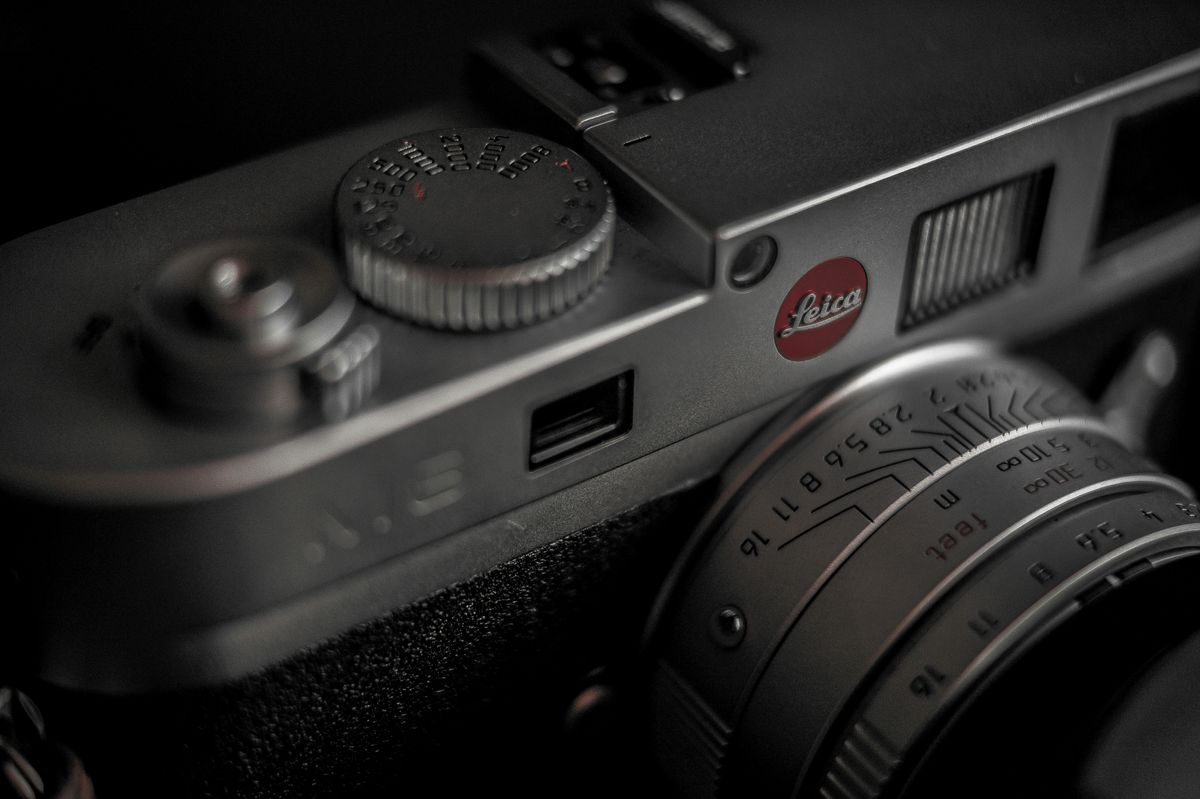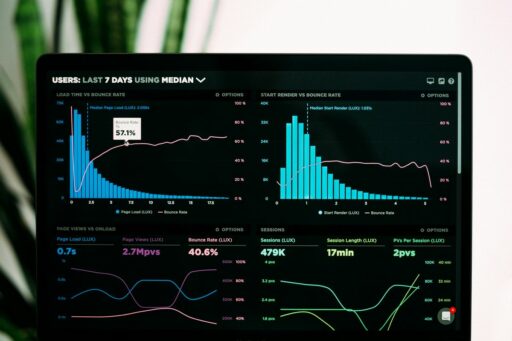Table of Contents
In the realm of digital photography, EXIF data serves as a hidden narrative embedded within each image, telling the tale of its creation. This metadata, often overlooked, holds the key to understanding the technical and contextual aspects of photographs. From camera settings to location history, EXIF data enriches our appreciation and analysis of digital images, while also raising important questions about authenticity and privacy. As we delve into the world of EXIF data, we uncover its multifaceted role in photography, archiving, and the evolving challenges it faces in the age of artificial intelligence.
Key Takeaways
- EXIF data provides essential information about the technical aspects of a photograph, such as camera settings and the conditions under which the photo was taken.
- Understanding EXIF data is crucial for verifying the authenticity of images, especially in an era where digital manipulation is common.
- EXIF metadata plays a significant role in digital archiving and historical research, offering insights into the context and provenance of photographs.
- Privacy concerns and varying standards present challenges in the use and sharing of EXIF data, necessitating careful consideration and management.
- The absence of EXIF data in AI-generated images highlights the importance of metadata in distinguishing between human and machine-created content.
Decoding the Digital Imprint: The Role of EXIF Data in Photography

Understanding EXIF Data and Its Origins
EXIF, or Exchangeable Image File Format, is a standard that encapsulates a wealth of information within digital images. Originating from the desire to standardize the way image data is stored across various devices, EXIF data serves as a digital imprint, detailing the technical aspects of how a photograph was captured.
EXIF data typically includes camera settings such as shutter speed, aperture, and ISO, along with the date, time, and sometimes the location where the photo was taken. This metadata is automatically embedded by most digital cameras and smartphones during the image capture process.
The presence of EXIF data can be a telling indicator of an image’s origins, offering insights into the technical execution behind the shot.
While EXIF data is invaluable for understanding the technicalities of photography, it’s important to note its limitations. Not all images will contain EXIF data, especially those that are AI-generated or have been edited to remove or alter this information. Here’s a brief list of common EXIF data fields:
- Camera model
- Shutter speed
- Aperture
- ISO sensitivity
- Date and time of capture
- GPS coordinates (if available)
The interpretation of EXIF data can be complex, as different devices and software may handle metadata in varying formats, leading to potential inconsistencies.
The Technical Tale: Camera Settings and Shot Details
Every photograph tells a story, not just through its visual narrative but also through the hidden technical details embedded within. EXIF data, or Exchangeable Image File Format, is akin to a digital fingerprint, providing a wealth of information about the conditions under which a photo was taken. This metadata can include camera model, shutter speed, aperture, ISO, and more, offering insights into the photographer’s technique and the environment of the shot.
For photographers aiming to achieve super-sharp photos or perfect landscape colors, understanding and manipulating camera settings is crucial. Here’s a brief rundown of some key EXIF data fields and what they reveal about a photograph:
- Camera Model: Identifies the equipment used.
- Shutter Speed: Indicates the duration of the exposure.
- Aperture: Shows the size of the lens opening during the shot.
- ISO: Reflects the sensitivity of the camera’s sensor to light.
Mastery of photography requires not just patience and creativity, but also a deep understanding of these technical elements. The ability to interpret EXIF data can elevate one’s craft, transforming an ordinary shot into a masterpiece.
While some may overlook the significance of EXIF data, it is an invaluable tool for verifying the authenticity of a photograph. It can also serve as a learning aid, allowing photographers to analyze their settings post-shoot and make informed adjustments for future endeavors.
The Impact of EXIF on Photo Authenticity and Content Verification
In the realm of digital photography, EXIF data serves as a crucial component for establishing the authenticity of images. The presence of EXIF data can be a strong indicator of an image’s origin and veracity. This metadata, embedded within the file, often includes camera model, settings, and other technical details that are typically absent in AI-generated images.
The proliferation of AI-generated images on social media platforms raises concerns about the future of photography and the importance of authenticity in art.
However, the reliability of EXIF data for content verification is not absolute. There are limitations and challenges that must be acknowledged:
- Dependence on Metadata: The effectiveness of content verification relies heavily on the presence and accuracy of metadata.
- Varying Standards: Different devices may store metadata in various formats, leading to potential inconsistencies.
- Altered Metadata: Some images may have stripped or altered metadata, which can limit verification efforts.
Despite these challenges, EXIF data remains a valuable tool for distinguishing between genuine photographs and those that are digitally fabricated.
Beyond the Lens: How EXIF Data Enhances Our Understanding of Images

Tracing the Photographic Journey: Time, Date, and Location
The EXIF data embedded in digital images serves as a chronological and geographical compass, guiding us through the photographer’s journey. It was developed to provide a standardized way of recording important details such as camera settings, date and time, GPS coordinates, and much more.
By examining the EXIF data, we can piece together the narrative of an image, understanding not just the ‘where’ and ‘when,’ but also the ‘how’ of its creation.
This metadata can be particularly revealing when analyzing historical photographs or building a family genealogy. Photos can transform your research, allowing you to create a timeline of your ancestors’ lives or contextualize specific points in their history.
- Time and Date: Pinpoint the exact moment a photo was taken.
- Location: Identify the geographical coordinates where the photo was captured.
- Camera Settings: Understand the technical aspects that went into creating the image.
Analyzing Image Quality and Resolution Through EXIF
The EXIF data embedded in digital images is a treasure trove of information that can be pivotal in analyzing image quality and resolution. This metadata, automatically captured by cameras, phones, or scanners, includes crucial details such as camera settings, the date, and file information like size and type. By examining the EXIF data, one can discern the level of detail a photo contains, which is directly linked to its resolution.
For photographers and image analysts, EXIF data serves as a quantitative measure of image quality. A higher resolution, indicated by a greater number of pixels, usually translates to a more detailed and clearer image. Here’s a simple breakdown of how EXIF data can reflect on image quality:
- Camera Model: Different models have varying capabilities, affecting resolution.
- Shutter Speed: Faster speeds can reduce motion blur, enhancing sharpness.
- Aperture: Affects depth of field and the amount of light, influencing detail.
- File Size: Larger files can indicate higher resolution and more detail.
While the presence of EXIF data can be a strong indicator of image authenticity, it’s important to note that not all digital imagery will contain such metadata. AI-generated images, for instance, often lack EXIF data, which can be a telltale sign of their origin.
Understanding the nuances of EXIF data is essential for anyone involved in digital photography, whether for personal or professional purposes. It’s a powerful tool for research and can significantly impact the interpretation and validation of images.
The Significance of EXIF in Digital Archiving and Historical Research
In the realm of digital archiving and historical research, EXIF data serves as a crucial link to the past, providing a wealth of information that can authenticate and contextualize digital photographs. This metadata, embedded within the image file, often includes camera settings, date, time, and sometimes even the precise location where the photo was taken.
The value of EXIF data in historical research cannot be overstated. It allows researchers to:
- Trace the technological evolution of photography.
- Establish a timeline of events or usage of specific photographic equipment.
- Verify the authenticity of historical images.
The meticulous details captured in EXIF data can reveal the unseen narratives behind each photograph, offering insights into the era, location, and circumstances under which it was taken.
However, the reliance on EXIF data also introduces challenges. The accuracy of this information is contingent upon the original settings and inputs at the time of capture. Moreover, varying standards and formats across different devices can lead to inconsistencies, necessitating specialized tools and techniques for proper analysis.
The Invisible Narrative: EXIF Data as a Storytelling Tool

Revealing the Context: EXIF Data in Photojournalism
In the realm of photojournalism, EXIF data serves as a digital fingerprint, offering a layer of context that can be crucial for verifying the authenticity of images. This metadata, embedded within the photograph itself, can include a myriad of details from camera settings to the precise moment the shutter was clicked.
The integrity of photojournalism hinges on the trustworthiness of images. EXIF data provides a means to ensure that the stories told are grounded in reality.
For instance, the EXIF data can reveal if a photo was taken with a professional DSLR or a simple smartphone, shedding light on the circumstances under which the image was captured. Additionally, the presence of EXIF data can distinguish original photographs from AI-generated images, which typically lack such metadata.
Here’s a glimpse into the kind of information that EXIF data can unveil about a photograph in the field of journalism:
- Camera model and make
- Shutter speed
- Aperture
- Date and time of capture
- GPS coordinates (if available)
Understanding these details not only aids in the verification process but also enriches the narrative behind the image, providing a deeper connection between the viewer and the moment immortalized by the photographer.
Personal Histories: Using EXIF to Uncover Ancestral Footprints
The quest to piece together a family history can be significantly enriched by the intricate details hidden within EXIF data. This metadata, embedded in digital photographs, serves as a time capsule that can reveal the timeline of our ancestors’ lives. By examining EXIF information, such as dates, camera settings, and locations, we can place ancestors within specific contexts and eras, transforming our understanding of their stories.
EXIF data can be the key to unlocking the mysteries of ancestral photographs, providing context where written records may fall short.
For those delving into genealogy, photos are more than mere images; they are gateways to the past. They allow us to put a face to the names etched in our family trees and preserve memories that might otherwise be lost to time. With the right approach, even a single photo can offer a wealth of information about our forebears.
Here are some tips for using EXIF data in genealogical research:
- Review the timestamps to construct a chronological narrative.
- Analyze camera settings and shot details to understand the environment and circumstances of the photograph.
- Use location data to trace the geographical journey of ancestors.
By integrating these practices, we can create a more vivid and accurate picture of our personal histories.
The Artistic Angle: How Photographers Utilize EXIF Data Creatively
Photographers have long embraced the technical aspects of their craft, but the creative use of EXIF data is a relatively new frontier. By examining the metadata, artists can gain insights into their own shooting habits and preferences, which can inform future creative decisions. For instance, patterns in aperture settings or focal lengths used across different works can inspire new projects or techniques.
- Reviewing past camera settings to refine their artistic style
- Identifying frequently used lenses to explore new visual effects
- Analyzing time and date stamps to understand the influence of natural light
EXIF data serves not just as a digital footprint but as a canvas for innovation and introspection.
Moreover, EXIF data can be a powerful tool for storytelling, providing context that adds depth to the visual narrative. Photographers can create series based on the metadata, such as grouping images by the time of day or location, to convey a more cohesive story. The absence of EXIF data in AI-generated images underscores its value in authenticating human creativity.
Navigating the Challenges: Limitations and Misconceptions of EXIF Data

Confronting Inconsistencies: Varying Standards and Formats
The world of digital photography is fraught with varying standards and formats when it comes to EXIF data, leading to a landscape where inconsistency is the norm rather than the exception. Different camera manufacturers and software developers often have their own interpretations of EXIF standards, which can result in discrepancies in how data is recorded and read.
- Dependence on Metadata: The effectiveness of data analysis is contingent on the presence and accuracy of metadata.
- Diverse Formats: Cameras and devices may store metadata in various formats, complicating interpretation.
Normalization of data is crucial for structured analysis and organization. However, the lack of a unified approach to EXIF data across devices and software means that photographers and analysts often need to employ tools and techniques to ensure data consistency.
The challenge lies not only in the collection of EXIF data but also in its interpretation and the ability to compare it across different sources effectively.
Privacy Concerns and the Ethics of EXIF Data Sharing
The sharing of digital images is commonplace, yet many are unaware that with each photo, a trail of EXIF data is also transferred. This metadata, while useful for various purposes, carries with it significant privacy concerns. For instance, the inadvertent disclosure of location information can pose risks to personal safety or privacy.
When considering the ethical implications of EXIF data, it’s essential to balance the benefits of metadata with the respect for individual privacy. Here are some key considerations:
- Ethical Use: The extraction and use of EXIF data should be done with consideration for the privacy of the individuals involved.
- Legal Compliance: Adherence to digital privacy and data protection laws is mandatory when handling EXIF data.
- Security Assessments: Tools like Jimpl can assess privacy risks, but users must be vigilant about the potential exposure of sensitive information.
The ethical use of EXIF data is not just a technical issue but a social responsibility that requires awareness and careful consideration.
Finally, it’s crucial to recognize that while tools and techniques for managing EXIF data exist, they must be used responsibly. The responsibility lies with both the creators and consumers of digital content to ensure that privacy is not compromised in the pursuit of information.
Overcoming Obstacles: Tools and Techniques for Accurate EXIF Analysis
In the realm of digital photography, EXIF data serves as a crucial source of information. However, the process of extracting and analyzing this data can be fraught with challenges. Tools like Jimpl have been developed to address these issues, offering functionalities such as metadata extraction and analysis of EXIF data. Jimpl’s capabilities allow for the retrieval of details like camera settings, date and time of capture, and even GPS coordinates where available.
Despite its utility, Jimpl and similar tools face limitations due to the dependence on the presence and accuracy of metadata. Images with stripped or altered metadata present a significant hurdle. Moreover, the varying standards across different devices can lead to inconsistencies in data interpretation. To navigate these challenges, users must be aware of the following points:
- Ensure the image has intact EXIF data before analysis.
- Familiarize oneself with the different metadata formats and standards.
- Use updated tools that can handle various metadata formats effectively.
By adopting a methodical approach and utilizing the right tools, photographers and analysts can overcome the obstacles presented by EXIF data, ensuring accurate and meaningful insights into their digital imagery.
As we continue to rely on digital tools to understand and authenticate our visual content, the role of EXIF data remains pivotal. It is essential to stay informed about the latest developments in EXIF analysis techniques to maintain the integrity of our digital visual heritage.
EXIF in the Age of AI: Distinguishing Between Human and Machine-Created Images

The Absence of EXIF in AI-Generated Imagery
AI-generated images often come with a conspicuous void where we would typically find EXIF data. This absence of metadata is a telltale sign of their synthetic origin. Unlike photographs captured by digital cameras, which carry a digital imprint detailing camera settings and environmental conditions, images birthed from algorithms lack this layer of authenticity.
In the digital realm, metadata is the silent witness to an image’s history. Its absence in AI-generated images is a stark reminder of their artificial provenance.
While human photographers leave behind a trail of digital breadcrumbs in the form of EXIF data, AI creations emerge metadata-free. This lack of information can be puzzling for those accustomed to the rich data provided by traditional photography. The following list outlines key aspects typically found in EXIF data that are missing in AI-generated images:
- Camera model and manufacturer
- Lens specifications
- Shutter speed
- Aperture
- ISO sensitivity
- Date and time of capture
- Geolocation information
The absence of such details not only raises questions about the image’s origin but also about its authenticity and the intent behind its creation.
Authenticating Visual Content in a Digital World
In the digital realm, where pixels reign supreme, metadata acts as the whisper of provenance, the ghost in the machine whispering the story of an image’s origin. Yet, when it comes to AI-generated visuals, this whisper often fades into an unsettling silence, the absence of detailed metadata raising a red flag in the face of hyperrealism and professional polish.
Transparency plays a very key role. It is important to understand the sources of content to assess its credibility, authenticity, and potential biases.
By analyzing the metadata associated with an image, you can follow its journey through editing software, online platforms, and potential manipulation attempts. This transparency is crucial in combating the spread of misinformation. Visual synthetic data involves artificially generated images, mimicking real-world characteristics, to enhance machine learning models by providing diverse and privacy-conscious datasets.
- MISSING METADATA AND PROVENANCE
- Facial flickering as an indicator
- Labeling AI-Generated Images on Facebook, Instagram, and Threads
The challenge lies in the fact that AI-generated content often lacks the EXIF data that would normally be present in human-captured images. This absence of EXIF in AI-generated imagery is a significant hurdle for content authentication.
The Future of EXIF: Adaptations and Considerations for Emerging Technologies
As we venture further into the digital age, the role of EXIF data in photography is poised for transformation. The integration of EXIF data with emerging technologies promises to redefine how we interact with and understand images. With the advent of machine learning and artificial intelligence, the potential for EXIF data to contribute to creative data visualization and enhanced image analytics is significant.
The absence of EXIF in AI-generated imagery presents a unique challenge. Unlike traditional photographs, AI-generated images often lack the rich metadata that EXIF provides. This gap necessitates the development of new standards and methods for embedding and analyzing metadata in synthetic images.
The future of EXIF data will likely involve adaptations that ensure its relevance and utility in a landscape increasingly dominated by AI and machine learning.
To maintain the integrity and usefulness of EXIF data, the following considerations are essential:
- Establishing universal standards for metadata in digital and AI-generated images.
- Developing tools that can accurately analyze and interpret EXIF data across various platforms and formats.
- Addressing privacy concerns by implementing secure methods of sharing and utilizing EXIF data.
As we embrace these changes, EXIF data will continue to serve as a critical tool for photographers, historians, and technologists alike.
Conclusion: The Integral Role of EXIF Data in Digital Photography
Throughout this exploration of EXIF data, we’ve uncovered its multifaceted role in digital photography. From providing essential technical details to aiding in the authentication of images, EXIF data serves as a hidden narrative behind every photograph. Tools like Jimpl have demonstrated the value of metadata extraction and analysis, revealing the depth of information that can be gleaned from digital images. However, we’ve also recognized the limitations and challenges posed by varying standards and the potential alteration of metadata. As we continue to advance in the digital age, understanding and utilizing EXIF data will remain a crucial skill for photographers, investigators, and enthusiasts alike, ensuring that the stories our images tell are as rich and accurate as the visuals they capture.
Frequently Asked Questions
What is EXIF data in digital photography?
EXIF (Exchangeable Image File Format) data is metadata captured by cameras, phones, or scanners that includes information such as camera settings, date, location, file size, and type. It provides detailed insights into how a photograph was taken.
Can EXIF data help verify the authenticity of a photo?
Yes, EXIF data can play a crucial role in photo authenticity by providing technical details that can be cross-referenced or analyzed to determine if a photo has been altered or originates from a specific device.
Why is EXIF data often missing from AI-generated images?
AI-generated images typically lack EXIF data because they are not captured by a camera but created by algorithms, which do not record the same type of metadata that a camera would.
How does EXIF data contribute to digital archiving and historical research?
EXIF data is significant for digital archiving and historical research as it provides context and details like date, time, and location, which can be essential for cataloging and understanding the historical significance of images.
What are the limitations of relying on EXIF data for image analysis?
Limitations include dependence on the presence and accuracy of metadata, inconsistencies due to varying standards and formats across devices, and the potential for metadata to be stripped or altered.
How can EXIF data serve as a storytelling tool in photography?
EXIF data reveals the context in which a photo was taken, such as the camera settings and location, providing a narrative about the photographer’s technique and the environment of the shot, which can enhance the story behind the image.





